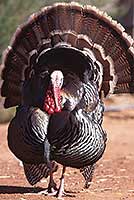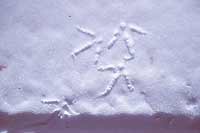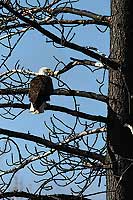 November has turkey written all over it. Nowadays, the Thanksgiving holiday casts a huge spotlight on these magnificent birds, the wild turkey (Meleagris gallopavo) whose story is an amazing one.
November has turkey written all over it. Nowadays, the Thanksgiving holiday casts a huge spotlight on these magnificent birds, the wild turkey (Meleagris gallopavo) whose story is an amazing one.
Native to the New World, these members are related to grouse and quail. Like their smaller allies, turkey flocks can easily number 50 birds as they move about in social groups with a developed pecking order, pardon the pun. And, long before Columbus sailed for the New World, wild turkeys had already been domesticated in southern Mexico by the Aztecs.
Perhaps that animal husbandry knowledge traveled north from Mexico up into the Southwest borne on the backs of travelers and traders who also brought corn, beans, and squash seeds with them. A second domestication period of these birds has been noted in the Southwest sometime between 200 B.C. and A.D. 500. The Ancestral Puebloans kept birds more for their feathers which were used in rituals and ceremonies and to make warm robes and blankets. Some birds were probably eaten and their stout bones were turned into tools such as awls and needles.
 The turkey’s range in 1492 probably included Mexico, the Southwest, Midwest and across the nation to the east. Several different subspecies have been identified across this distribution, with the Rio Grande, Merriam’s and Gould’s subspecies found in and around the Four Corners region. Once abundant, by the early 20th century turkeys were just about extirpated across much of their range due to overhunting and habitat loss. Things might have been different for the wild turkey if Ben Franklin had prevailed in the 1780s.
The turkey’s range in 1492 probably included Mexico, the Southwest, Midwest and across the nation to the east. Several different subspecies have been identified across this distribution, with the Rio Grande, Merriam’s and Gould’s subspecies found in and around the Four Corners region. Once abundant, by the early 20th century turkeys were just about extirpated across much of their range due to overhunting and habitat loss. Things might have been different for the wild turkey if Ben Franklin had prevailed in the 1780s.
Benjamin Franklin, who had advocated for the turkey to be selected as the nation’s symbol in 1782, wrote to his daughter Sarah Bache in 1784, “For my own part I wish the Bald Eagle had not been chose the Representative of our Country. He is a Bird of bad moral Character … For the Truth the Turkey is in Comparison a much more respectable Bird, and withal a true original Native of America…” Lacking any protective status, by the end of the 20th century turkeys existed in small pockets and had been extirpated over much of their range.
Through the efforts by state agencies and private conservation organizations like the National Wild Turkey Federation, wild turkeys have returned to much of their native habitat in North America. It’s not uncommon to see a flock of birds foraging along Indian Creek or roosting in massive cottonwoods along the Colorado River near Dewey Bridge. Any agricultural field near a creek or river is an ideal location to look for toms, jakes and jennies feeding on seeds, acorns, berries, leaves, grasshoppers, and even small amphibians or reptiles.
Though these are wily birds, they suffer predation by coyotes, bobcats, foxes, raccoons, and birds of prey. They nest in secluded areas on the ground, but still the predators may find them. Longevity is not in the cards for this bird.
So this November, while you’re gathered with friends and family, give thanks to the wild descendants of the special guest on your Thanksgiving table. These birds carry with them a long history of wildness and domestication. Now that’s something to gobble about.